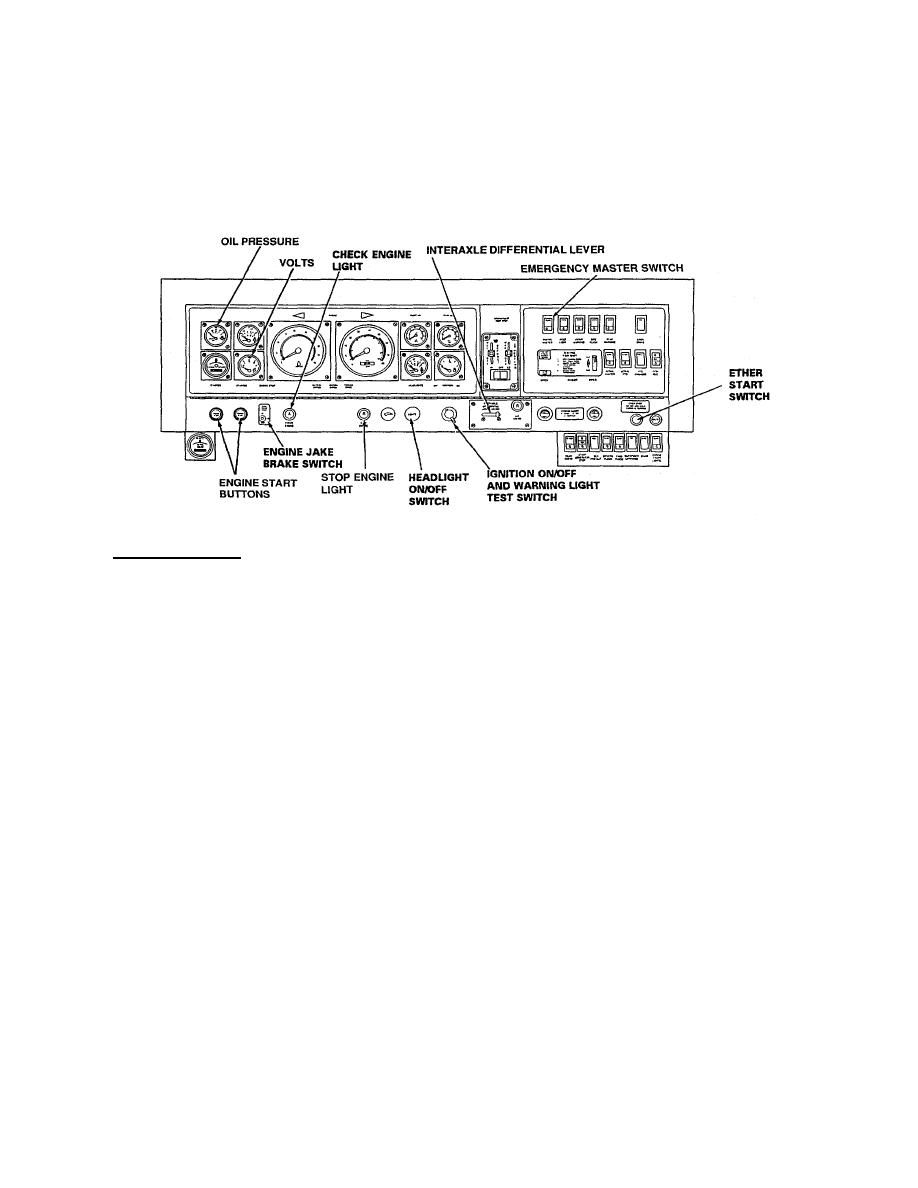 |
|||
|
|
|||
|
|
|||
| ||||||||||
|
|
 TM 5-4210-233-14&P-1
2-12. OPERATING PROCEDURES - Continued
(6)
When the engine is started, observe the OIL PRESS gauge. After the first few seconds of operation,
the oil pressure alarm lamp should cease indicating and the oil pressure remain above 10 psi (70 kPa).
If the oil pressure remains below 10 psi (70 kPa), stop the engine and refer to Unit Maintenance.
(7) Observe the VOLTS meter to ensure that the batteries are being charged.
b. Driving the Vehicle.
WARNING.
When the air system alarm lamps are indicating, the service
brakes are not very effective and driving may be hazardous.
Commence safe driving ONLY when the alarm lamp indication
ceases.
(1) Adjust the drivers seat and rear view mirrors, and switch ON lights, beacons, siren and other
accessories as required. Fasten your seat belt.
(2) Depress the brake pedal to engage the service brakes.
(3) Release the parking brakes by pushing the PARKING BRAKE button IN.
(4) Be sure that the INTERAXLE DIFFERENTIAL lever is set to UNLOCK.
(5) Select desired gear or gear range using transmission shift lever.
(6) Release the brake pedal and depress the accelerator pedal.
(7) If driving in wet conditions (rain, snow, mud), set the INTERAXLE DIFFERENTIAL lever
to the LOCK position. Use of the INTERAXLE DIFFERENTIAL lever engages the drive
mode of both tandem axles, thus providing increased traction.
(8) To aid in slowing the vehicle, set the ENGINE JAKE BRAKE switch to LO or HI positions.
CAUTION
Operating a Jacob Brake on slippery roads may result in skidding.
2-47
|
|
Privacy Statement - Press Release - Copyright Information. - Contact Us |